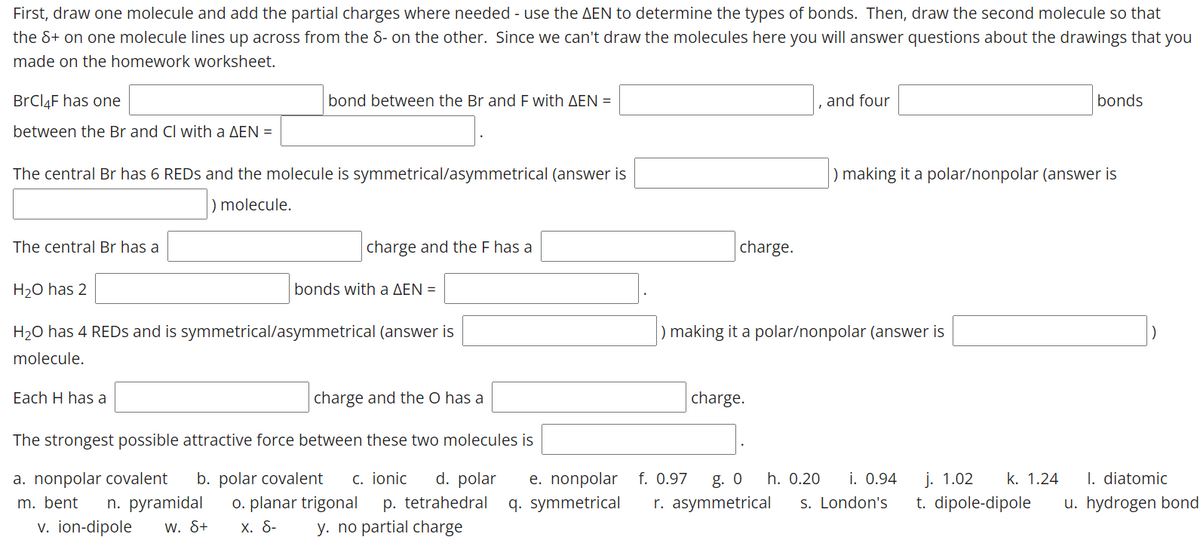First, draw one molecule and add the partial charges where needed - use the AEN to determine the types of bonds. Then, draw the second molecule so that the &+ on one molecule lines up across from the &- on the other. Since we can't draw the molecules here you will answer questions about the drawings that you made on the homework worksheet. BrClaF has one bond between the Br and F with AEN = and four bonds between the Br and Cl with a AEN = The central Br has 6 REDS and the molecule is symmetrical/asymmetrical (answer is ) making it a polar/nonpolar (answer is ) molecule. The central Br has a charge and the F has a charge. H20 has 2 bonds with a AEN = H20 has 4 REDS and is symmetrical/asymmetrical (answer is making it a polar/nonpolar (answer is molecule. Each H has a charge and the O has a charge. The strongest possible attractive force between these two molecules is c. ionic p. tetrahedral q. symmetrical j. 1.02 t. dipole-dipole f. 0.97 i. 0.94 I. diatomic a. nonpolar covalent n. pyramidal w. 8+ b. polar covalent d. polar e. nonpolar g. 0 h. 0.20 k. 1.24 o. planar trigonal x. 8- r. asymmetrical m. bent s. London's u. hydrogen bond v. ion-dipole y. no partial charge
Electronic Effects
The effect of electrons that are located in the chemical bonds within the atoms of the molecule is termed an electronic effect. The electronic effect is also explained as the effect through which the reactivity of the compound in one portion is controlled by the electron repulsion or attraction producing in another portion of the molecule.
Drawing Resonance Forms
In organic chemistry, resonance may be a mental exercise that illustrates the delocalization of electrons inside molecules within the valence bond theory of octet bonding. It entails creating several Lewis structures that, when combined, reflect the molecule's entire electronic structure. One Lewis diagram cannot explain the bonding (lone pair, double bond, octet) elaborately. A hybrid describes a combination of possible resonance structures that represents the entire delocalization of electrons within the molecule.
Using Molecular Structure To Predict Equilibrium
Equilibrium does not always imply an equal presence of reactants and products. This signifies that the reaction reaches a point when reactant and product quantities remain constant as the rate of forward and backward reaction is the same. Molecular structures of various compounds can help in predicting equilibrium.
Draw the attraction between a water molecule and a molecule of BrCl4F. Br is the central atom in an expanded octet - count your electrons carefully.

Trending now
This is a popular solution!
Step by step
Solved in 2 steps with 1 images









